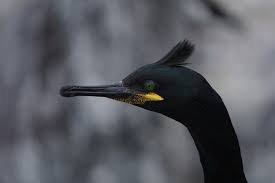The Hancock bird (Charadrius pecuarius), a small, captivating shorebird, embodies the resilience and adaptability of life on the edge of the sea. Found across the diverse coastlines of sub-Saharan Africa and Madagascar, this species, named in honor of John Hancock, an American naturalist and statesman, has enthralled birdwatchers and scientists alike with its subtle beauty, intricate behaviors, and crucial role in coastal ecosystems. Join us as we delve into the remarkable world of the Hancock bird, exploring its habitat, life cycle, behaviors, and the conservation efforts aimed at safeguarding its future. Mamgatoto
Thriving in Coastal Niches: The Hancock Bird’s Habitat

The Hancock bird is a master of adaptation, flourishing in a variety of coastal habitats, including sandy beaches, mudflats, estuaries, salt pans, and even inland saline lakes. These diverse environments provide the bird with ample opportunities to forage for its preferred food sources: insects, small crustaceans, worms, and mollusks, which it skillfully extracts from the sand or mud using its specialized beak.
The bird’s cryptic plumage, a muted palette of pale brown and grey with delicate black markings, allows it to blend seamlessly with its surroundings, offering protection from predators like gulls, raptors, and foxes. This natural camouflage also makes the Hancock bird a captivating challenge for birdwatchers, who often rely on their keen observation skills and knowledge of the bird’s habits to catch a glimpse of this elusive creature.
A Cycle of Renewal: The Hancock Bird’s Life and Breeding Rituals
The Hancock bird’s breeding season typically commences with the onset of the rainy season, as the increased rainfall triggers a surge in insect populations, providing ample food for the growing chicks. Males engage in elaborate courtship displays, performing aerial acrobatics and emitting distinctive calls to attract potential mates.
Once paired, the birds construct simple nests, often just shallow depressions scraped in the sand or gravel, lined with bits of shell and vegetation. The female typically lays two to three eggs, which are expertly camouflaged to blend with the surrounding environment. Both parents share incubation duties, taking turns to keep the eggs warm and protect them from predators. After hatching, the chicks, precocial and capable of walking and feeding themselves, are carefully tended to by both parents until they fledge and become independent.
The Art of Survival: Unique Behaviors of the Hancock Bird
The Hancock bird’s behavior is as intriguing as its habitat. Known for its nimble movements and lightning-fast reflexes, the bird is a skilled forager, probing the sand and mud with its beak in search of hidden prey. It often employs a “run-and-stop” technique, darting across the ground before abruptly pausing to scan for food. This behavior, combined with its cryptic plumage, makes it a master of elusiveness, easily disappearing into the landscape.
Hancock birds are also social creatures, often gathering in small flocks during non-breeding periods. These flocks provide safety in numbers, allowing the birds to collectively watch for predators and share information about food sources. Their vocalizations, ranging from soft chirps to alarm calls, play a crucial role in maintaining social cohesion and communication within the flock.
Conserving a Coastal Treasure: Challenges and Solutions
While the Hancock bird has demonstrated remarkable adaptability, it faces numerous challenges to its survival. Habitat loss and degradation due to coastal development, pollution, and human disturbance pose significant threats. Climate change, with its associated sea-level rise and extreme weather events, also impacts the bird’s nesting sites and food availability.
To address these challenges, conservation organizations and researchers are working tirelessly to monitor Hancock bird populations, study their behavior and ecology, and implement habitat restoration projects. Public awareness campaigns are also underway to educate local communities and tourists about the importance of protecting this species and its fragile coastal environment.
How You Can Contribute to Hancock Bird Conservation
As a nature enthusiast, you can play a vital role in the conservation of the Hancock bird:
- Be a Responsible Birdwatcher: When observing the birds, maintain a respectful distance and avoid disturbing their nests or feeding areas.
- Support Conservation Organizations: Donate to or volunteer with organizations dedicated to protecting shorebirds and their habitats.
- Spread Awareness: Share your knowledge and passion for the Hancock bird with others, raising awareness about its plight and the importance of conservation.
The Hancock Bird: A Symbol of Resilience and Adaptation
The Hancock bird is more than just a charming shorebird; it is a testament to the intricate web of life that exists along our coastlines. By understanding its unique adaptations, appreciating its role in the ecosystem, and supporting conservation efforts, we can ensure that this enigmatic species continues to thrive in its coastal haven for generations to come.




